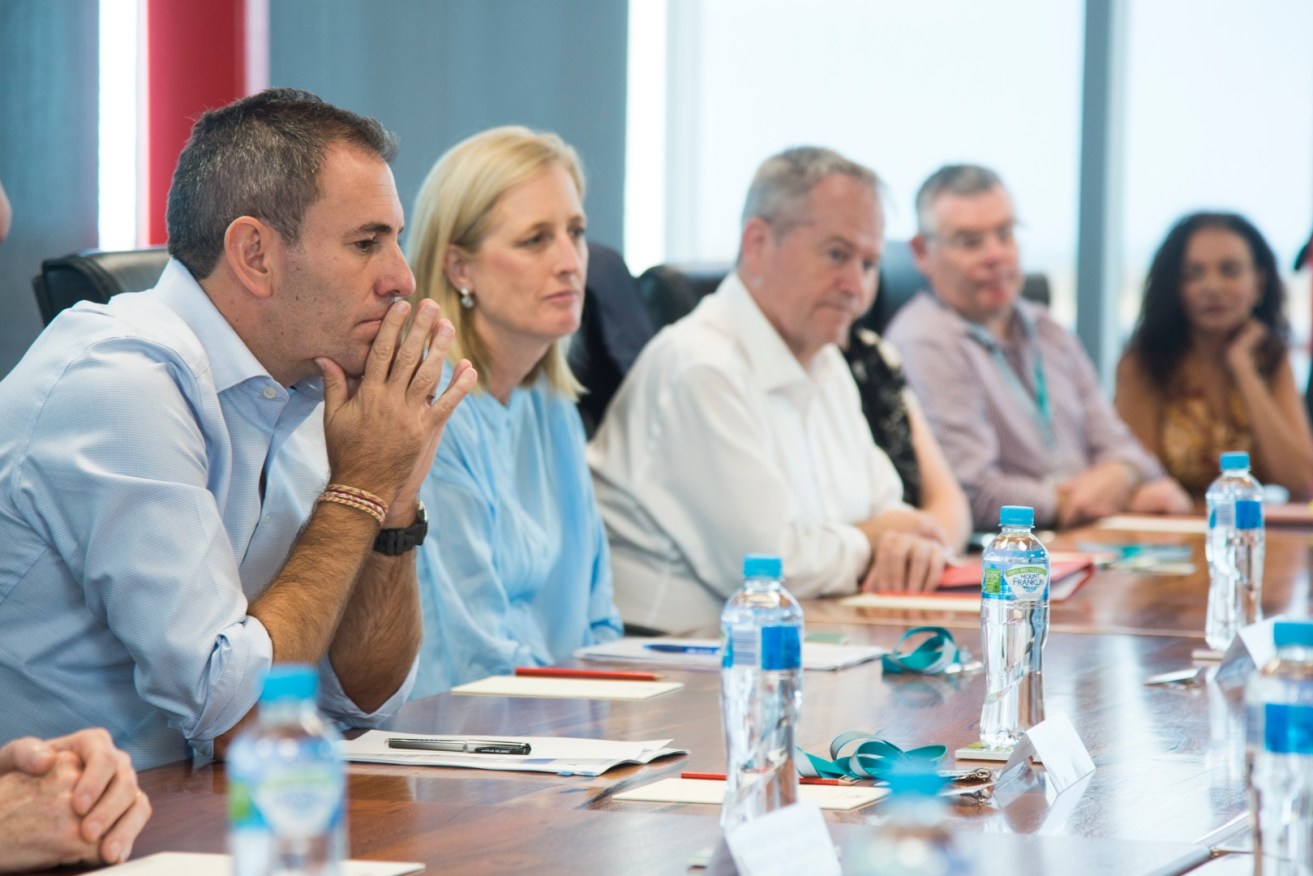What the Treasurer’s proposed cap on superannuation balances means for you
Treasurer Jim Chalmers opened the gates to superannuation reform last week with the wording of the long-awaited objective of superannuation to be legislated later in the year.

Treasurer Jim Chalmers and colleagues have some hard thinking to do on super concessions. Photo: AAP
The wording for the objective of super was likely to be “to preserve savings to deliver income for a dignified retirement, alongside government support, in an equitable and sustainable way”, the Treasurer said in a speech delivered on Monday.
That seemingly obvious statement effectively begins discussion on how much money you need for a “dignified retirement”.
The answer is definitely not over the $100 million that 32 Australians have in their self-managed super funds.
The thing with superannuation is that it is built on tax concessions deemed necessary to convince people of the need to put money away for 30 or 40 years. And you might be surprised by how much those concessions cost the budget each year.
Current Treasury figures show that super tax concessions, concessions on contributions and earnings for those working and tax-free pensions for retirees, cost the budget $52.3 billion, almost as much as the $55 billion spent on the aged pension.
That’s more than the $35.5 billion for the NDIS and the $27.1 billion for aged care.
“We need to be really careful about tax concessions as they cost a lot of money and they need to be targeted,” Chant West research director Ian Fryer said.
Dr Chalmers, the man with his hands on the nation’s purse strings, is looking for ways to prune back those super costs without picking a political fight he can’t win.
So far he has given us a hint, saying less than 1 per cent of superannuation members have more than $3 million in their accounts. That’s about 16,000 people.
Cap is coming
Dr Chalmers appears to be saying that the government will likely put a cap on the amount that people can hold in super. There is already a fight brewing around what size cap that should be.
The superannuation industry says $5 million, while the Grattan Institute says $2 million would be a better figure, above which a higher tax rate would be applied.
“The current system is offering billions of dollars a year to the wealthy who won’t spend them in retirement,” Grattan Institute economic policy program director Brendan Coates said.
“The main effect of that is to boost the value of inheritances which makes Australia less equal,” Coates said.
How would this affect you?
Given that 16 million Australians have superannuation accounts and only between 11,000 and 80,000 people have balances of between $2 million and $5 million, the average person is not likely to be affected at all.
They will never build the types of balances the proposed caps would hit so they wouldn’t notice the change.
But there’s a problem for the government in that. It won’t deliver Treasury enough money to really stem the rise in super costs. Somewhere between $1 billion and $1.5 billion a year, depending on which cap is chosen.
So, the Grattan Institute has cooked up some other ideas that would help deliver budget savings without drawing the sort of ire from retirees that cost Labor the 2019 election.
Tax and contributions
Currently anyone earning above $250,000 is levied tax of 30 per cent on their super contributions on that excess.
On the income below $250,000 their contributions are taxed at 15 per cent like everyone else.
Contributions tax is the tax the government takes out of concessional super contributions. Most people’s employers take from their wages for them.
Grattan Institute says that limit should be cut to $220,000 and a tax of 35 cents in the dollar being levied above that income.
On top of that the Grattan Institute is calling for the maximum concessional contribution to be cut from the current maximum of $27,500 to $20,000.
“Most people contributing more than $20,000 are in the top 20 per cent of income earners and will never spend their super in retirement,” Coates said.
“That will save $1.6 billion a year and reducing the income level at which section 293 tax (on high incomes) to $220,000 would save another $1.1 billion,” Coates said.
The hard stuff
Those changes would be relatively easy to sell to the electorate as they would only affect a relatively small number of high-income earners and the punters would not feel like the Treasurer was coming for their retirement savings.
But collectively they might bring in only $4.2 billion.
“The elephant in the room is that most people are still earning tax-free income in retirement,” Coates said.
He suggests charging retirees a 15 per cent tax rate on earnings inside their funds in retirement.
That means a tax on the money your money generates in investments inside the fund, not the income paid out to retiree members.
“That would raise $6 billion a year for the government,” Coates said.
However, that would likely be seen by retirees as retrospective because it wasn’t the deal they signed up to when they entered the system.
It would also be easily portrayed as a tax on battlers who had worked hard all their lives.
So it’s unlikely to come up as a policy move from an ALP that still smarts at its 2019 clobbering over what the Coalition labelled as a “retiree tax”.
Fryer says there is a simple way a super cap could be worked out.
“If you make it $3.4 million, that’s twice the transfer balance cap (the amount of money you can have in a tax-free super pension account),” Fryer said.
“I don’t think it needs to be higher than that because if you have a partner that could be as high as $6.8 million.”
This story first appeared in our sister publication The New Daily, which is owned by Industry Super Holdings.




